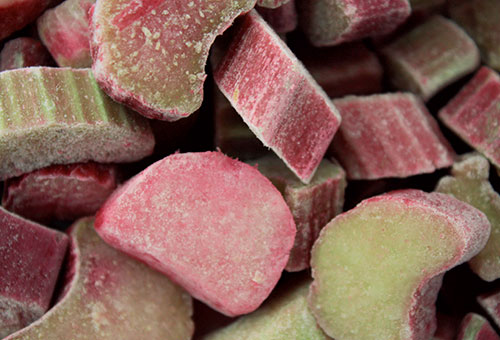The rhubarb, which is called as garden rhubarb by botanists, is considered to be the one of the most beneficial for health plants growing in our climatic zone. A discovery several thousand years ago of this wild vegetable called da-huang is owed to Chinese herbalists. It reached South Europe as a medicine already in the 2nd century BC. The Greeks and the Romans were using it to increase an appetite. A dried rhizome of the garden rhubarb was called by the Romans “rha barbarum”, what meant “growing by the river Rha (Volga) in the country of barbarians”. A discontinuation of this medicine import was caused by the Fall of the Roman Empire. A famous traveller Marco Polo brought its sample only in the 13th century but only just when one hundred years passed, Arabian merchants and medics caused regular supplies of this specific. The rhubarb was very expensive and that caused aiming at gaining the whole plant to grow it around a living place. This idea succeeded in Britain only at the end of the 16th century. These were unfortunately different varieties of garden rhubarb which roots had no curative properties but Englishmen regarded their stems as very delicious.
The rhubarb is considered to be a vegetable all around the world except for the United States of America where it is considered to be fruit. In order to avoid any doubts with regard to that fact it was stated at the court seat in New York in 1974 that the rhubarb had got to be classified that way, as it was used for jams production as the other fruit were. The rhubarb has become legally the fruit since then. The fact of lower tax for a product specified this way might have a major impact on that…
The rhubarb has many advantages. It is the low-calorie product (100 g of the rhubarb contains barely 16 kcal), rich in minerals (potassium, calcium, magnesium, sodium, iron, phosphorus), B group vitamins, vitamin C and carotene.
No rhubarb stems but its root is used in therapeutics. A bitter taste of the rhubarb root activates digestion by stimulation of saliva and gastric acid secretion. So it is helpful in regard to hypoacidity and inappetence.
Strawberries and oranges, lemon and orange zest, apples, red currants as well as vanilla and spices are perfect rhubarb complements. These ingredients make the variously prepared rhubarb to taste deliciously. The rhubarb may be preserved as a processed product, syrups, marmalades, compotes, as well as a frozen mousse as it is perfect addition to baking or to classic dessert: a rhubarb crumble.
|
















